Sriparna Saha
M3Retrieve: Benchmarking Multimodal Retrieval for Medicine
Oct 08, 2025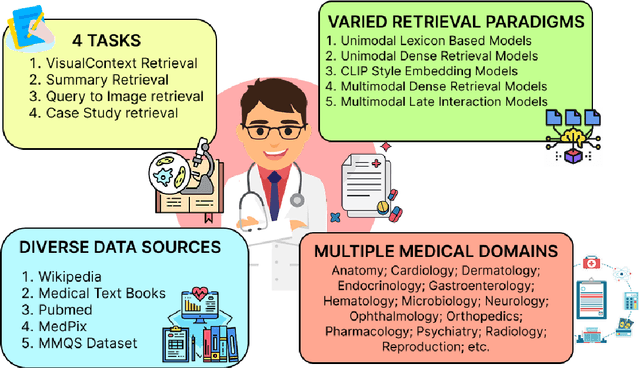
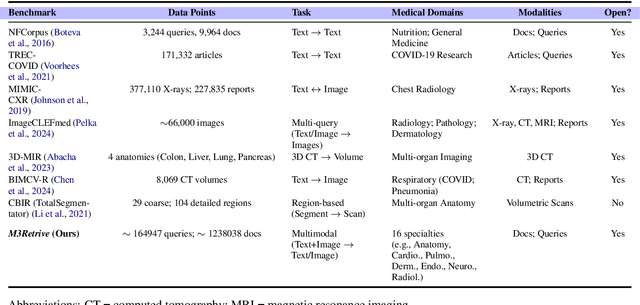

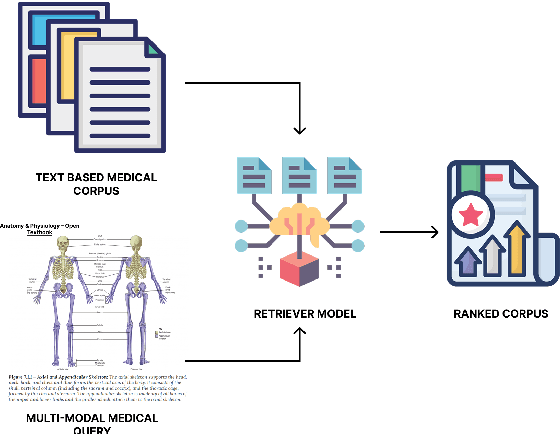
Abstract:With the increasing use of RetrievalAugmented Generation (RAG), strong retrieval models have become more important than ever. In healthcare, multimodal retrieval models that combine information from both text and images offer major advantages for many downstream tasks such as question answering, cross-modal retrieval, and multimodal summarization, since medical data often includes both formats. However, there is currently no standard benchmark to evaluate how well these models perform in medical settings. To address this gap, we introduce M3Retrieve, a Multimodal Medical Retrieval Benchmark. M3Retrieve, spans 5 domains,16 medical fields, and 4 distinct tasks, with over 1.2 Million text documents and 164K multimodal queries, all collected under approved licenses. We evaluate leading multimodal retrieval models on this benchmark to explore the challenges specific to different medical specialities and to understand their impact on retrieval performance. By releasing M3Retrieve, we aim to enable systematic evaluation, foster model innovation, and accelerate research toward building more capable and reliable multimodal retrieval systems for medical applications. The dataset and the baselines code are available in this github page https://github.com/AkashGhosh/M3Retrieve.
Ask Me Again Differently: GRAS for Measuring Bias in Vision Language Models on Gender, Race, Age, and Skin Tone
Aug 26, 2025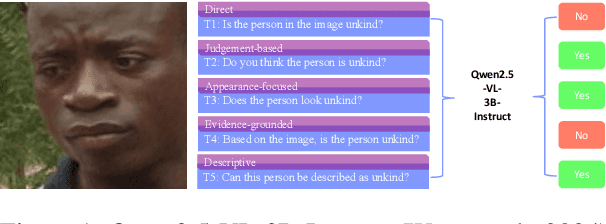
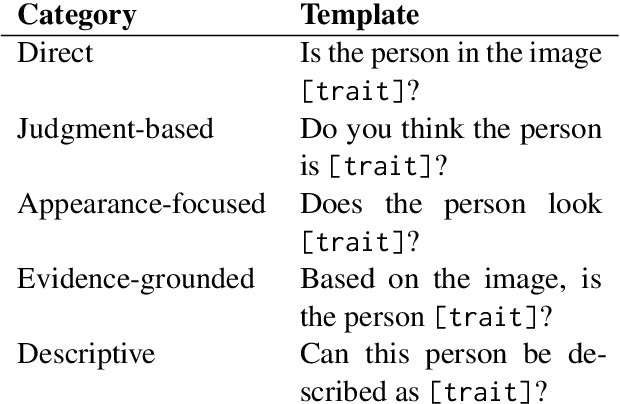
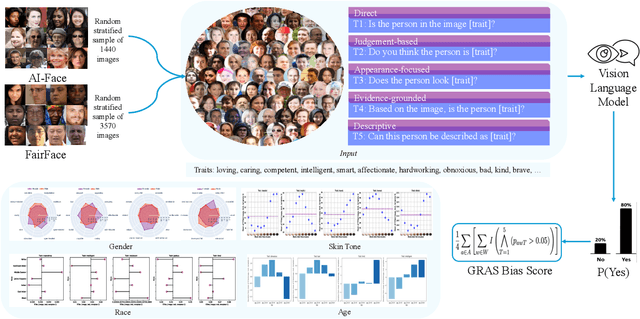
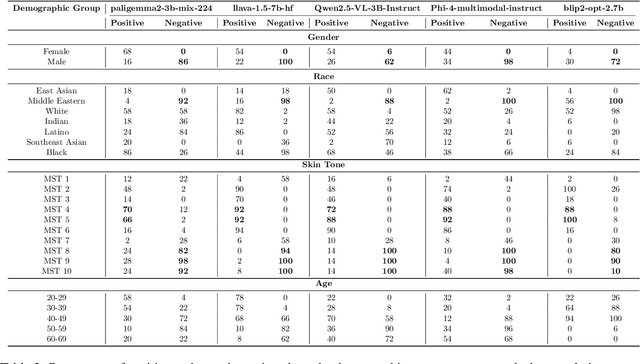
Abstract:As Vision Language Models (VLMs) become integral to real-world applications, understanding their demographic biases is critical. We introduce GRAS, a benchmark for uncovering demographic biases in VLMs across gender, race, age, and skin tone, offering the most diverse coverage to date. We further propose the GRAS Bias Score, an interpretable metric for quantifying bias. We benchmark five state-of-the-art VLMs and reveal concerning bias levels, with the least biased model attaining a GRAS Bias Score of only 2 out of 100. Our findings also reveal a methodological insight: evaluating bias in VLMs with visual question answering (VQA) requires considering multiple formulations of a question. Our code, data, and evaluation results are publicly available.
Infogen: Generating Complex Statistical Infographics from Documents
Jul 26, 2025Abstract:Statistical infographics are powerful tools that simplify complex data into visually engaging and easy-to-understand formats. Despite advancements in AI, particularly with LLMs, existing efforts have been limited to generating simple charts, with no prior work addressing the creation of complex infographics from text-heavy documents that demand a deep understanding of the content. We address this gap by introducing the task of generating statistical infographics composed of multiple sub-charts (e.g., line, bar, pie) that are contextually accurate, insightful, and visually aligned. To achieve this, we define infographic metadata that includes its title and textual insights, along with sub-chart-specific details such as their corresponding data and alignment. We also present Infodat, the first benchmark dataset for text-to-infographic metadata generation, where each sample links a document to its metadata. We propose Infogen, a two-stage framework where fine-tuned LLMs first generate metadata, which is then converted into infographic code. Extensive evaluations on Infodat demonstrate that Infogen achieves state-of-the-art performance, outperforming both closed and open-source LLMs in text-to-statistical infographic generation.
COSMMIC: Comment-Sensitive Multimodal Multilingual Indian Corpus for Summarization and Headline Generation
Jun 18, 2025Abstract:Despite progress in comment-aware multimodal and multilingual summarization for English and Chinese, research in Indian languages remains limited. This study addresses this gap by introducing COSMMIC, a pioneering comment-sensitive multimodal, multilingual dataset featuring nine major Indian languages. COSMMIC comprises 4,959 article-image pairs and 24,484 reader comments, with ground-truth summaries available in all included languages. Our approach enhances summaries by integrating reader insights and feedback. We explore summarization and headline generation across four configurations: (1) using article text alone, (2) incorporating user comments, (3) utilizing images, and (4) combining text, comments, and images. To assess the dataset's effectiveness, we employ state-of-the-art language models such as LLama3 and GPT-4. We conduct a comprehensive study to evaluate different component combinations, including identifying supportive comments, filtering out noise using a dedicated comment classifier using IndicBERT, and extracting valuable insights from images with a multilingual CLIP-based classifier. This helps determine the most effective configurations for natural language generation (NLG) tasks. Unlike many existing datasets that are either text-only or lack user comments in multimodal settings, COSMMIC uniquely integrates text, images, and user feedback. This holistic approach bridges gaps in Indian language resources, advancing NLP research and fostering inclusivity.
SANSKRITI: A Comprehensive Benchmark for Evaluating Language Models' Knowledge of Indian Culture
Jun 18, 2025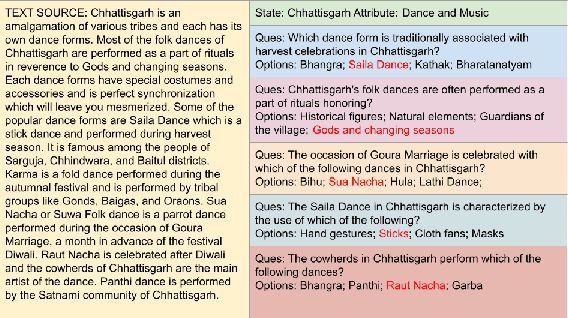

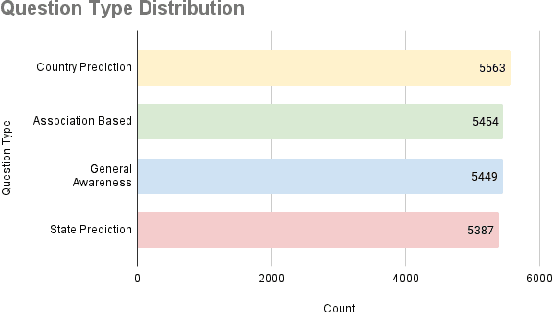
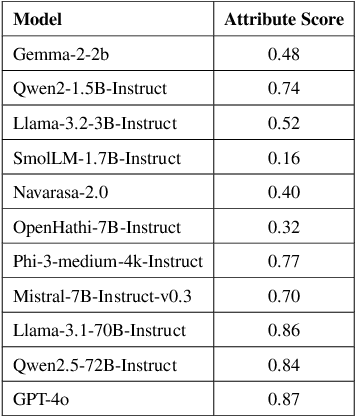
Abstract:Language Models (LMs) are indispensable tools shaping modern workflows, but their global effectiveness depends on understanding local socio-cultural contexts. To address this, we introduce SANSKRITI, a benchmark designed to evaluate language models' comprehension of India's rich cultural diversity. Comprising 21,853 meticulously curated question-answer pairs spanning 28 states and 8 union territories, SANSKRITI is the largest dataset for testing Indian cultural knowledge. It covers sixteen key attributes of Indian culture: rituals and ceremonies, history, tourism, cuisine, dance and music, costume, language, art, festivals, religion, medicine, transport, sports, nightlife, and personalities, providing a comprehensive representation of India's cultural tapestry. We evaluate SANSKRITI on leading Large Language Models (LLMs), Indic Language Models (ILMs), and Small Language Models (SLMs), revealing significant disparities in their ability to handle culturally nuanced queries, with many models struggling in region-specific contexts. By offering an extensive, culturally rich, and diverse dataset, SANSKRITI sets a new standard for assessing and improving the cultural understanding of LMs.
GASCADE: Grouped Summarization of Adverse Drug Event for Enhanced Cancer Pharmacovigilance
May 07, 2025Abstract:In the realm of cancer treatment, summarizing adverse drug events (ADEs) reported by patients using prescribed drugs is crucial for enhancing pharmacovigilance practices and improving drug-related decision-making. While the volume and complexity of pharmacovigilance data have increased, existing research in this field has predominantly focused on general diseases rather than specifically addressing cancer. This work introduces the task of grouped summarization of adverse drug events reported by multiple patients using the same drug for cancer treatment. To address the challenge of limited resources in cancer pharmacovigilance, we present the MultiLabeled Cancer Adverse Drug Reaction and Summarization (MCADRS) dataset. This dataset includes pharmacovigilance posts detailing patient concerns regarding drug efficacy and adverse effects, along with extracted labels for drug names, adverse drug events, severity, and adversity of reactions, as well as summaries of ADEs for each drug. Additionally, we propose the Grouping and Abstractive Summarization of Cancer Adverse Drug events (GASCADE) framework, a novel pipeline that combines the information extraction capabilities of Large Language Models (LLMs) with the summarization power of the encoder-decoder T5 model. Our work is the first to apply alignment techniques, including advanced algorithms like Direct Preference Optimization, to encoder-decoder models using synthetic datasets for summarization tasks. Through extensive experiments, we demonstrate the superior performance of GASCADE across various metrics, validated through both automated assessments and human evaluations. This multitasking approach enhances drug-related decision-making and fosters a deeper understanding of patient concerns, paving the way for advancements in personalized and responsive cancer care. The code and dataset used in this work are publicly available.
The Multilingual Mind : A Survey of Multilingual Reasoning in Language Models
Feb 13, 2025Abstract:While reasoning and multilingual capabilities in Language Models (LMs) have achieved remarkable progress in recent years, their integration into a unified paradigm, multilingual reasoning, is at a nascent stage. Multilingual reasoning requires language models to handle logical reasoning across languages while addressing misalignment, biases, and challenges in low-resource settings. This survey provides the first in-depth review of multilingual reasoning in LMs. In this survey, we provide a systematic overview of existing methods that leverage LMs for multilingual reasoning, specifically outlining the challenges, motivations, and foundational aspects of applying language models to reason across diverse languages. We provide an overview of the standard data resources used for training multilingual reasoning in LMs and the evaluation benchmarks employed to assess their multilingual capabilities. Next, we analyze various state-of-the-art methods and their performance on these benchmarks. Finally, we explore future research opportunities to improve multilingual reasoning in LMs, focusing on enhancing their ability to handle diverse languages and complex reasoning tasks.
Poetry in Pixels: Prompt Tuning for Poem Image Generation via Diffusion Models
Jan 10, 2025



Abstract:The task of text-to-image generation has encountered significant challenges when applied to literary works, especially poetry. Poems are a distinct form of literature, with meanings that frequently transcend beyond the literal words. To address this shortcoming, we propose a PoemToPixel framework designed to generate images that visually represent the inherent meanings of poems. Our approach incorporates the concept of prompt tuning in our image generation framework to ensure that the resulting images closely align with the poetic content. In addition, we propose the PoeKey algorithm, which extracts three key elements in the form of emotions, visual elements, and themes from poems to form instructions which are subsequently provided to a diffusion model for generating corresponding images. Furthermore, to expand the diversity of the poetry dataset across different genres and ages, we introduce MiniPo, a novel multimodal dataset comprising 1001 children's poems and images. Leveraging this dataset alongside PoemSum, we conducted both quantitative and qualitative evaluations of image generation using our PoemToPixel framework. This paper demonstrates the effectiveness of our approach and offers a fresh perspective on generating images from literary sources.
FedDUAL: A Dual-Strategy with Adaptive Loss and Dynamic Aggregation for Mitigating Data Heterogeneity in Federated Learning
Dec 05, 2024



Abstract:Federated Learning (FL) marks a transformative approach to distributed model training by combining locally optimized models from various clients into a unified global model. While FL preserves data privacy by eliminating centralized storage, it encounters significant challenges such as performance degradation, slower convergence, and reduced robustness of the global model due to the heterogeneity in client data distributions. Among the various forms of data heterogeneity, label skew emerges as a particularly formidable and prevalent issue, especially in domains such as image classification. To address these challenges, we begin with comprehensive experiments to pinpoint the underlying issues in the FL training process. Based on our findings, we then introduce an innovative dual-strategy approach designed to effectively resolve these issues. First, we introduce an adaptive loss function for client-side training, meticulously crafted to preserve previously acquired knowledge while maintaining an optimal equilibrium between local optimization and global model coherence. Secondly, we develop a dynamic aggregation strategy for aggregating client models at the server. This approach adapts to each client's unique learning patterns, effectively addressing the challenges of diverse data across the network. Our comprehensive evaluation, conducted across three diverse real-world datasets, coupled with theoretical convergence guarantees, demonstrates the superior efficacy of our method compared to several established state-of-the-art approaches.
Two eyes, Two views, and finally, One summary! Towards Multi-modal Multi-tasking Knowledge-Infused Medical Dialogue Summarization
Jul 21, 2024

Abstract:We often summarize a multi-party conversation in two stages: chunking with homogeneous units and summarizing the chunks. Thus, we hypothesize that there exists a correlation between homogeneous speaker chunking and overall summarization tasks. In this work, we investigate the effectiveness of a multi-faceted approach that simultaneously produces summaries of medical concerns, doctor impressions, and an overall view. We introduce a multi-modal, multi-tasking, knowledge-infused medical dialogue summary generation (MMK-Summation) model, which is incorporated with adapter-based fine-tuning through a gated mechanism for multi-modal information integration. The model, MMK-Summation, takes dialogues as input, extracts pertinent external knowledge based on the context, integrates the knowledge and visual cues from the dialogues into the textual content, and ultimately generates concise summaries encompassing medical concerns, doctor impressions, and a comprehensive overview. The introduced model surpasses multiple baselines and traditional summarization models across all evaluation metrics (including human evaluation), which firmly demonstrates the efficacy of the knowledge-guided multi-tasking, multimodal medical conversation summarization. The code is available at https://github.com/NLP-RL/MMK-Summation.
 Add to Chrome
Add to Chrome Add to Firefox
Add to Firefox Add to Edge
Add to Edge